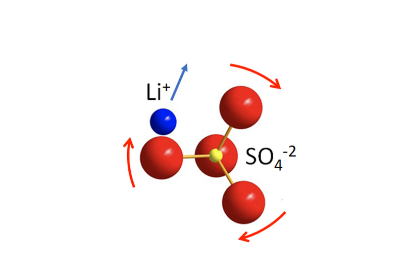
(Source: Agung official website)
With the development of smart phones, notebook computers, automobiles and power grids, the demand for battery energy storage continues to grow. Solid-state batteries are safer and have a longer lifespan, and are regarded as one of the most promising next-generation technologies. According to foreign media reports, as an energy innovation center led by the US Department of Energy's Argonne National Laboratory, the Joint Energy Storage Research Center (JCESR) has made significant progress in solid-state batteries. A major challenge facing solid-state batteries is how to increase the diffusion rate of lithium ions in solid-state electrolytes. This is because its diffusion rate is usually slower than the liquid organic electrolyte used in traditional lithium-ion batteries.
Linda Nazar, the principal professor of the University of Waterloo in Canada, is one of the cooperative members of the JCESR team. Professor Nazar and his postdoctoral research assistant Zhizhen Zhang showed how to promote the flow of lithium ions in solid-state batteries through the paddlewheel effect, which is the coordinated movement of atoms. According to Nazar, solid-state batteries use solid electrolytes instead of the usual liquid organic electrolytes, and are expected to become a replacement for lithium-ion batteries. Nazar said: "They have the potential to become safer and longer-lasting batteries that can provide higher energy density, which is important for various electrochemical energy storage applications, such as cars, robots, drones, etc. As solid-state batteries The most important part of the battery is, to a large extent, the solid electrolyte determines the safety and cycle stability of the battery."
For current lithium ion batteries, thermal runaway may cause the battery to fire and explode. Taking into account these risk factors, JCESR tried to replace the liquid organic electrolyte inside the battery with a solid electrolyte. The ionic conductivity of a few solid electrolytes is as high as that of liquid organic electrolytes, so it has attracted much attention. At the same time, JCESR is exploring a phenomenon that can significantly accelerate ion diffusion: in the solid electrolyte frame, normally stationary anions will rotate, helping to drive lithium cations. Nazar said: "In fact, the anion'building blocks' that make up the solid framework are not immobile, but are undergoing rotational motion. Our research shows that within the solid framework, the anion dynamic principle can promote the movement of lithium ions. Even in At room temperature, the anion dynamic reaction can also be "activated" by adjusting the frame, and it is strongly coupled to the cation diffusion through the paddle wheel effect. This is somewhat similar to a revolving door with multiple people passing through."
Although the research of new solid electrolytes is still in the development stage, the related progress is encouraging. George Crabtree, director of JCESR, said that this breakthrough will significantly improve the safety and deployment of lithium-ion batteries, or will change the rules of the game. Crabtree said: "If a solid electrolyte can be found to ensure the rapid movement of lithium ions, it will replace the liquid organic electrolyte and make the battery immediately get rid of the thermal runaway reaction. This is the main reason for the current lithium-ion battery fire. The safety advantage alone In other words, in the fields of mobile phones, notebook computers, video recorders, automobiles and power grids, this electrolyte will have a broad market."
The entire JCESR team is looking forward to solid state batteries. Other partners at the University of Michigan and the Massachusetts Institute of Technology are also discussing solid electrolytes and the "paddle effect." Crabtree said that solid-state batteries are one of the most promising and popular advancements in the industry. Crabtree said: "JCESR hopes to understand the origin of battery behavior at the atomic and molecular level. With this knowledge, we can build the battery from scratch, atom by molecule, from scratch, allowing each atom and molecule to play in the process of building the target battery. The designated role. The paddle wheel effect is one example. This research is at the forefront of solid electrolyte research, and we want to apply this knowledge to the commercial field." (Elisha)
Hardware Tool Set,Brick Trowel,Masonry Tools,Brick Trowels
Laizhou Chenke trading Co., Ltd. , https://www.ckbrushes.com